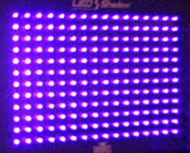Scientist from Korea published in Food Control a study on the influence of surface properties on inactivation efficacy of foodborne pathogens (E. coli O157:H7, S. Typhimurium, and L. monocytogenes) on various food contact surfaces, including glass, PVC, Stainless steel (SUS), Teflon, and silicon by using UVC light-emitting-diode (LED) irradiation. UVC LED lamps have gained interest as a replacement to UV lamps due to the Minamata convention (international treaty enacted to eliminate the use of mercury). To maximize pathogen inactivation a combination of 60 °C mild heat and UVC LED irradiation was applied. Surface properties, especially hydrophobicity, influenced to the inactivation of foodborne pathogens. Combination treatment of 60 °C mild heat and UVC LED achieved an additive or synergistic inactivation effect (up to 1 log reduction) on E. coli O157:H7, S. Typhimurium, and L. monocytogenes. The combined treatment can compensate for lower penetration and other limitations of UV irradiation, so that effective control of bacteria on food processing surfaces can occur. @ https://www.sciencedirect.com/science/article/pii/S095671351930458X?dgcid=rss_sd_all
Combination of mild heat and UVC LED achieved enhanced Bactericidal effect on food surfaces
No comments

